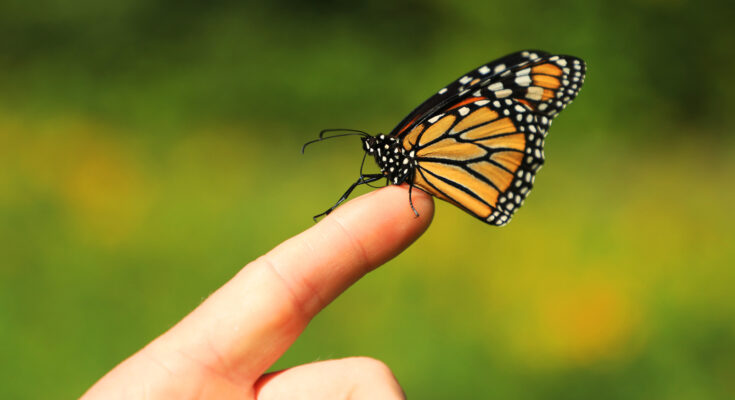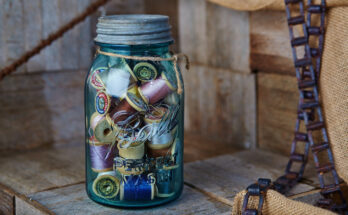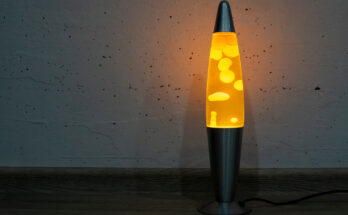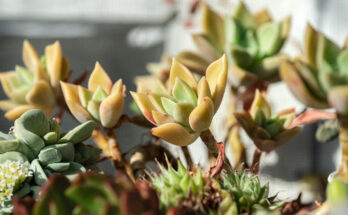The Best Ways To Attract And Keep Monarch Butterflies In The Garden
Monarch butterflies (Danaus plexippus) have long captivated humans due to their fascinating life cycles and physical characteristics. On top of this, this type of butterfly is known for having long migration distances, which can sometimes include the entire continent of North America. With that said, humans are also seeing fewer monarch butterflies in their backyards. In fact, the situation is so severe that the U.S. Fish and Wildlife Service declared the species as threatened in late 2024 and also proposed federal protections. Overall, it is estimated that since the 1980s, the western monarch butterfly population has declined by 95%, while the eastern populations have declined by 80% in the same time period. Both are at a great risk of extinction by 2080, unless steps are taken to help reverse their declining numbers. While federal protections could help, there are concrete steps you can take to attract monarch butterflies to your garden to support them, while also making sure they can safely keep visiting in the future.
Native plants are the best way to attract monarch butterflies, with milkweed being the most important. Milkweed is considered an essential food source for adult monarchs, and it is also the one and only type of plant that the caterpillars can feed from. One caveat to planting milkweed to attract monarch butterflies is that you must choose native plants only. Some of the types of native milkweed plants that have the widest ranges include butterflyweed (Asclepias tuberosa), common milkweed (Asclepias syriaca), purple milkweed (Asclepias purpurascens), and swamp milkweed (Asclepias incarnata). For the best access, plant milkweed around the perimeter of your garden.
Monarch butterflies may keep visiting your garden if you provide essential needs
Monarch butterflies may also keep visiting your outdoor space if you have adequate food, water, and shelter for them. There are two types of food sources monarch butterflies rely on: milkweed and nectar-producing flowers. You can also plant milkweed and other butterfly-friendly flowers together. If you’re unsure of whether a particular plant can help butterflies, start by looking at labels. In some cases, plants from garden centers will specify whether they are “butterfly-friendly.” Native plants are good items to have for butterflies, as well as those that can bloom throughout the year to support monarch butterfly migration needs. Some examples of plants that might attract monarch butterflies include wild bergamot, common dandelion, golden rod, brown eyed susan. It’s also helpful to plan your garden with varying heights of plants to help support monarch caterpillars, rather than having too many open spaces.
Monarch butterflies also require adequate shelter and sources of water, which can easily be supplied in a home garden. First, places of shelter can protect these butterflies from predators and storms. You can help by planting shrubs, or dense areas of tall grasses and wildflowers that the monarch butterflies can hide in when needed. Water can also attract monarch butterflies into your garden, particularly during hot and dry weather conditions. Creating a small puddle from a dug-out hole in your yard can suffice, or you can even fill a shallow birdbath with some clean water for the butterflies to sip from.
Avoid using pesticides and planting non-native plants
Preventing known harms to these species not only helps protect them, but you will also play a role in protecting human food supplies that rely on pollinators like monarch butterflies. While pesticides are known to harm these butterflies in commercial agricultural settings, insecticides for home use can cause the same types of damage. These products kill not only adult monarch butterflies that come into contact with the chemicals, but monarch caterpillars are also adversely affected. Needless to say, if your garden is sprayed with insecticides, monarch butterflies are likely to stay away from your home in order to protect themselves. You might instead explore more eco-friendly ways to keep bugs out of your garden.
Finally, it’s imperative that you do not plant non-native plants in your garden that could inadvertently harm monarch butterflies. Avoid non-native milkweed, particularly tropical milkweed (Asclepias curassavica). This invasive species can disrupt monarch butterfly migration and spread diseases among the species. You’ll want to do research and avoid this common mistake when planting milkweed for a diverse butterfly garden.



